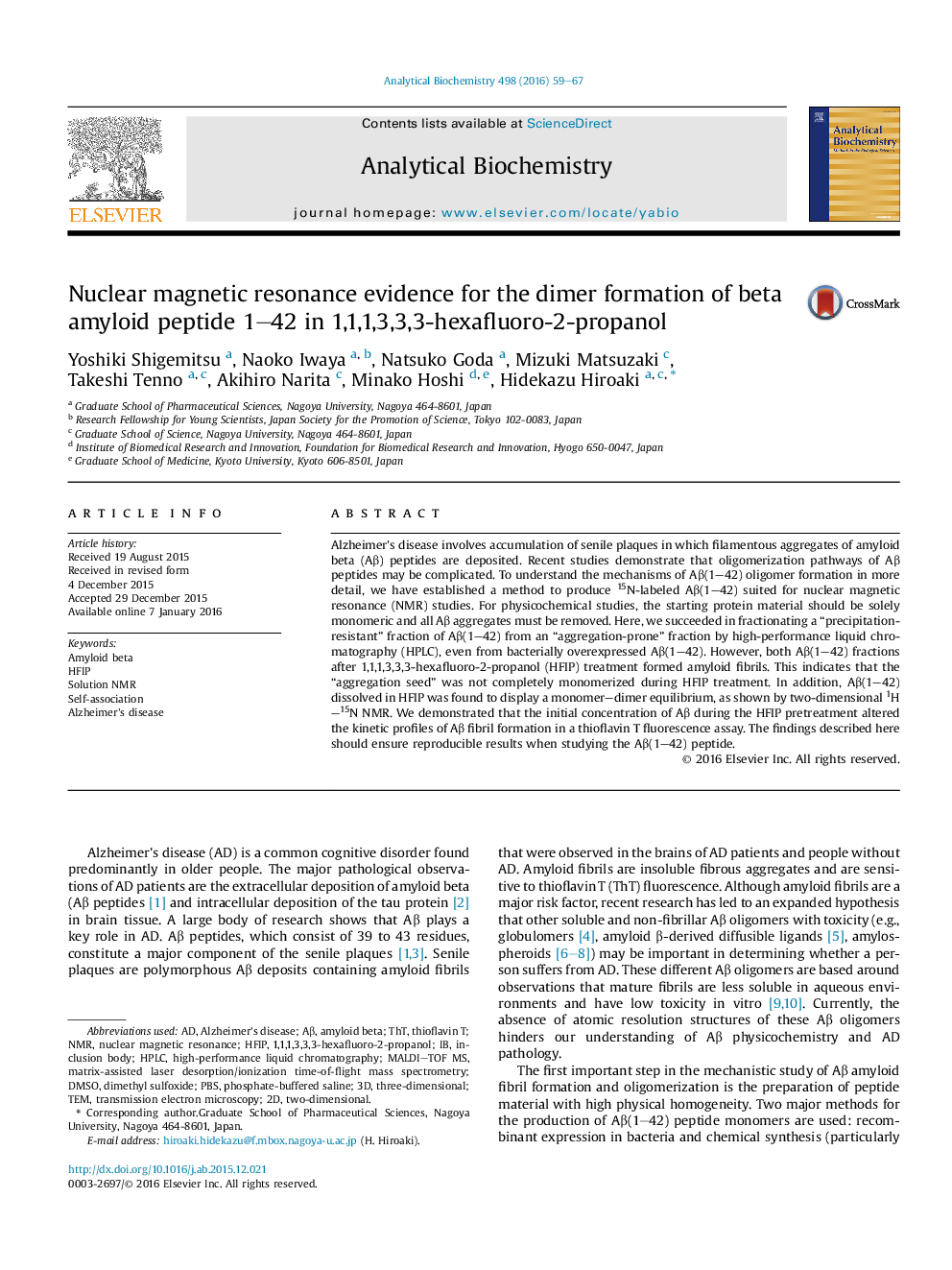| کد مقاله | کد نشریه | سال انتشار | مقاله انگلیسی | نسخه تمام متن |
|---|---|---|---|---|
| 1172991 | 1491349 | 2016 | 9 صفحه PDF | دانلود رایگان |

Alzheimer's disease involves accumulation of senile plaques in which filamentous aggregates of amyloid beta (Aβ) peptides are deposited. Recent studies demonstrate that oligomerization pathways of Aβ peptides may be complicated. To understand the mechanisms of Aβ(1–42) oligomer formation in more detail, we have established a method to produce 15N-labeled Aβ(1–42) suited for nuclear magnetic resonance (NMR) studies. For physicochemical studies, the starting protein material should be solely monomeric and all Aβ aggregates must be removed. Here, we succeeded in fractionating a “precipitation-resistant” fraction of Aβ(1–42) from an “aggregation-prone” fraction by high-performance liquid chromatography (HPLC), even from bacterially overexpressed Aβ(1–42). However, both Aβ(1–42) fractions after 1,1,1,3,3,3-hexafluoro-2-propanol (HFIP) treatment formed amyloid fibrils. This indicates that the “aggregation seed” was not completely monomerized during HFIP treatment. In addition, Aβ(1–42) dissolved in HFIP was found to display a monomer–dimer equilibrium, as shown by two-dimensional 1H–15N NMR. We demonstrated that the initial concentration of Aβ during the HFIP pretreatment altered the kinetic profiles of Aβ fibril formation in a thioflavin T fluorescence assay. The findings described here should ensure reproducible results when studying the Aβ(1–42) peptide.
Journal: Analytical Biochemistry - Volume 498, 1 April 2016, Pages 59–67